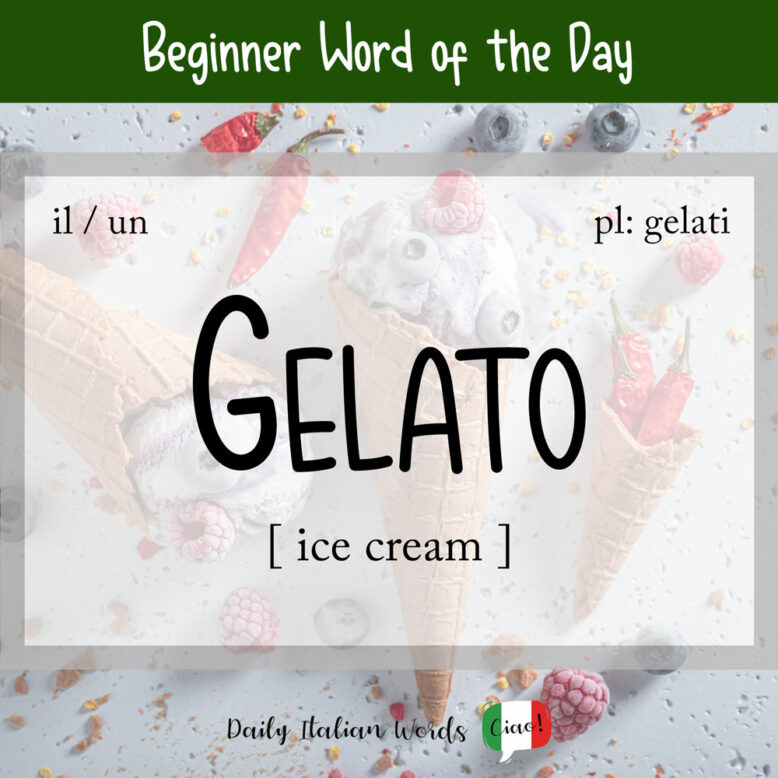In foreign countries, the noun gelato (masculine, plural gelati) is associated with a special kind of Italian ice cream. In Italy however, gelato refers to a wider range of ice cream and is therefore a more generic term.

The family of gelati includes, for example:
- sorbetto = sorbet
- ghiacciolo = ice pop / ice lolly
- gelato artigianale = artisanal ice cream (freshly made)
- gelato industriale = industrial ice cream (prepared months in advance)
The difference between gelato and the kind of ice cream that is popular in English-speaking countries is that the Italian version is has a lower proportion of cream (crema) and eggs (uova) and a higher proportion of milk (latte).
It is also denser than ice cream and served at a slightly warmer temperature, giving it a smooth and creamy texture.
Ad essere onesti, preferisco il gelato italiano rispetto ai gelati stranieri.
To be honest, I prefer Italian ice cream to foreign ice cream.
Some of the most famous flavours (gusti) of gelato you’ll come across in Italy include:
- fragola = strawberry
- cioccolato = chocolate
- crema = egg custard (the equivalent of vanilla)
- fior di latte = milk cream
- nocciola = hazelnuts
- pistacchio = pistachio
- stracciatella = chocolate chip
- limone = lemon
- bacio = dark chocolate hazelnut

The word gelato actually comes from the adjective gelato meaning frozen or ice-cold. The ending changes from o to a/i/e depending on the gender and number of the subject.
Ho le mani gelate! Mi presti i tuoi guanti?
My hands are frozen! Can you lend me your gloves?
Trivia: The father of the modern day gelato was Italian chef Francesco Procopio dei Coltelli. He introduced the frozen dessert for the first time at his café in Paris in the late 1600s and it soon gained recognition across Europe. Not only did he earn French citizenship as a result, but the Sun King Louis XIV also granted him an exclusive royal licence, making him the sole producer of gelato in the kingdom.
Heather Broster is a graduate with honours in linguistics from the University of Western Ontario. She is an aspiring polyglot, proficient in English and Italian, as well as Japanese, Welsh, and French to varying degrees of fluency. Originally from Toronto, Heather has resided in various countries, notably Italy for a period of six years. Her primary focus lies in the fields of language acquisition, education, and bilingual instruction.


